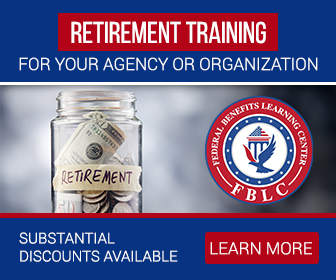Key Takeaways:
-
Understanding and optimizing FERS benefits is key to achieving early financial freedom.
-
Smart planning strategies, such as maximizing TSP contributions and leveraging health and retirement benefits, can set you up for a secure retirement.
Discovering Your FERS Advantage
- Also Read: FAA, Law Enforcement, and Special Federal Employee Categories—Here’s What Makes Their Retirement Unique
- Also Read: Blending Private and Public Sector Retirement Plans Is Complicated—Here’s Where Couples Get It Wrong
- Also Read: The Silent Shift in Postal Service Retirement Benefits That Could Change Everything by 2026
Your FERS advantage is rooted in flexibility and scalability. Whether you’re focused on securing a comfortable standard of living, paying off outstanding debts, or leaving a legacy for loved ones, your benefits are designed to adapt to these goals. The key lies in leveraging these tools effectively and staying ahead of potential challenges that could impact your timeline.
Mapping Out Your Retirement Timeline
When it comes to early retirement planning, understanding the Minimum Retirement Age (MRA) is crucial. In 2025, MRAs for FERS employees range from 55 to 57, depending on your birth year. Reaching your MRA allows you to access certain benefits, such as the MRA+10 option, which permits early retirement with a reduced annuity if you have at least 10 years of service. While this may seem like a straightforward path, planning wisely can help you minimize penalties and maximize payouts.
Strategies for Your MRA+10 Retirement
The MRA+10 option is a game changer, but it comes with a catch—a 5% reduction in your annuity for each year you retire before age 62. To mitigate this penalty, consider the following:
-
Boost Your High-3 Average: Your basic annuity is calculated using your highest three years of salary. Prioritize promotions or positions with higher pay as you approach retirement. These higher earnings directly translate into a larger annuity, so focus on opportunities that could increase your High-3 average in your final years of service.
-
Increase Your Service Years: Every additional year of service boosts your annuity. If you’re close to a milestone like 20 or 30 years of service, staying on a bit longer can significantly improve your payout. The longer you stay, the greater your annuity multiplier—potentially resulting in thousands of dollars of extra annual income.
-
Consider Post-Retirement Work: For those retiring before age 62, part-time work can supplement income without fully drawing down savings, bridging the gap until your annuity reduction diminishes or disappears.
Maximizing Your Thrift Savings Plan (TSP)
The TSP is your most powerful tool for building wealth under FERS. With a 2025 contribution limit of $23,500 and an additional $7,500 catch-up contribution for those 50 or older, you can supercharge your savings. Unlike traditional pensions, the TSP gives you control over investment decisions, allowing you to tailor your strategy to your risk tolerance and retirement goals.
Take Advantage of Matching Contributions
One of the best perks of the TSP is the federal government’s matching contributions. You’ll receive dollar-for-dollar matches on the first 3% of your salary and 50 cents per dollar on the next 2%. That’s essentially free money for your retirement. Always contribute at least 5% to maximize this benefit, as failing to do so leaves potential earnings on the table.
Explore Diverse Investment Options
The TSP offers a range of investment funds, including the G Fund (government securities), F Fund (fixed income), and various index funds such as the C, S, and I Funds. Diversifying across these options can help manage risk and capitalize on market growth. Reassess your allocation annually to ensure it aligns with your evolving goals.
Consider Lifecycle Funds
Lifecycle (L) Funds offer a simple way to manage your TSP investments. These funds automatically adjust their allocation based on your expected retirement date, reducing risk as you approach your target date. If you’re seeking a hands-off investment strategy, L Funds could be a perfect fit.
Rollovers and Withdrawals
If you’ve accumulated savings in other retirement accounts, consider rolling them into your TSP to streamline management and potentially reduce fees. Similarly, familiarize yourself with withdrawal options to ensure you’re not paying unnecessary penalties. For instance, the TSP allows penalty-free withdrawals starting at age 59 ½, providing flexibility for early retirees.
Coordinating Social Security Benefits
Social Security forms the second pillar of FERS, but deciding when to claim these benefits requires careful consideration. You can start receiving Social Security as early as age 62, but your monthly benefit increases the longer you wait, up to age 70.
Delaying Social Security for Higher Payments
Each year you delay claiming Social Security beyond your full retirement age adds an 8% increase to your benefit. If you can rely on your FERS annuity and TSP in the early years of retirement, delaying Social Security could significantly enhance your long-term financial stability. Evaluate your health, financial needs, and other income sources to determine the optimal age to claim benefits.
Spousal Benefits
If you’re married, consider how spousal benefits can impact your overall retirement income. The higher-earning spouse’s delay can provide a larger survivor benefit, ensuring financial security for the surviving spouse.
Health Insurance in Retirement
Health care is one of the largest expenses in retirement, but FERS members have access to the Federal Employees Health Benefits (FEHB) program. This program continues into retirement, provided you’ve been enrolled for at least five consecutive years before retiring.
FEHB and Medicare Coordination
At age 65, you’ll qualify for Medicare, and many retirees choose to coordinate it with FEHB for comprehensive coverage. In 2025, Medicare Part B premiums are $185 per month, and FEHB plans often waive deductibles for those who enroll in Medicare. By combining these programs, you can reduce out-of-pocket costs while maintaining robust health coverage.
Prescription Drug Coverage
FEHB plans often include prescription drug benefits comparable to Medicare Part D. Review your plan’s formulary to ensure it covers your medications. If you’re enrolled in Medicare, your FEHB plan may also offer enhanced drug coverage through an Employer Group Waiver Plan (EGWP).
Leveraging Additional Benefits
Beyond your basic annuity, TSP, and Social Security, FERS offers additional programs to enhance your retirement.
Federal Employees Group Life Insurance (FEGLI)
If you’ve maintained FEGLI coverage during your career, you can carry it into retirement. However, premiums increase significantly with age. Assess your need for life insurance as you approach retirement—it might make sense to adjust or reduce your coverage to save on costs.
Long-Term Care Insurance
The Federal Long Term Care Insurance Program (FLTCIP) provides coverage for services not typically covered by health insurance or Medicare. Evaluating this option can help protect your assets and provide peace of mind should you require long-term care.
Flexible Spending Accounts (FSA)
While FSAs are typically for active employees, they can be a valuable tool for saving on health care expenses during your working years. In 2025, the maximum contribution limit is $3,300, with a $660 carryover allowed for unused funds. These accounts enable you to save pre-tax dollars for qualified expenses, effectively giving you a discount on medical costs.
Avoiding Common Pitfalls
Retirement planning is complex, and even minor mistakes can have significant consequences. Here are some common pitfalls to avoid:
-
Underestimating Inflation: Ensure your retirement plan accounts for the rising cost of living. FERS annuities include Cost-of-Living Adjustments (COLAs), but these may not fully offset inflation for younger retirees.
-
Neglecting Tax Planning: Your TSP withdrawals, Social Security benefits, and part of your FERS annuity are taxable. Work with a financial advisor to minimize tax liabilities.
-
Failing to Review Plans Annually: Life changes, economic conditions, and policy updates can impact your retirement plans. Regular reviews help you stay on track.
Planning for Life After Retirement
A fulfilling retirement isn’t just about finances—it’s also about purpose. Many federal retirees transition into part-time work, volunteering, or hobbies that keep them engaged. These activities can provide additional income, reduce the need to dip into savings, and enhance your quality of life.
Re-Employment in the Federal Workforce
If you’re considering returning to federal service, understand how it impacts your benefits. Under the FERS system, your annuity may be reduced if you earn above certain thresholds. This is known as the re-employment offset.
Final Thoughts on Financial Freedom
Achieving financial freedom under FERS isn’t just about retiring early—it’s about retiring with confidence. By maximizing your benefits, avoiding common pitfalls, and staying proactive, you can ensure a comfortable and secure retirement. Take advantage of the tools and resources available to you and start planning today.











